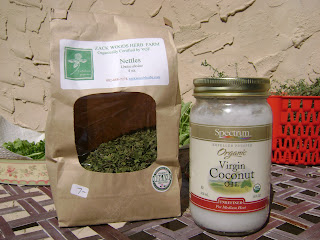A few years ago I ate a delicious macrobiotic lunch in the small neighborhood of Nachlaot, Jerusalem, Israel. The man who prepared the lunch was named Asher, but I knew of him as the Carpathian Mountain Man, as he called his home-based restaurant the Carpathian Mountain House. Asher is a wonderful man who loves sharing his home, good food, and wisdom with others. He opens his home to people all hours of the day and on Shabbat, for meals that feed the stomach and the soul. Usually during a meal Asher gives over a talk about the food he prepared and its healthful benefits, and he ties it to the Parshah of the week or to the Jewish holiday that is approaching. Many times his meals revolve around a certain body system or organ, such as the nervous system or the heart. He prepares dishes that correspond to and strengthen the body in unique and fascinating ways. The first time I went there I was of course bewitched by his extensive library, which covered topics such as Jewish astrology and ancient Jewish healing remedies. There was a book called "Nature's Wealth: Health and Healing Plants based on the teachings of the Rambam." It goes through various fruits, vegetables, and herbs and traced them to Rambam's writings and to the Torah. Since the book seemed rare and probably out of print, I did a search and found it for around $100 online. I could not afford that, so I waited. One day I searched for it again and found it on eBay for only $3! Soon it was delivered to my house and I asked my sister to bring it to me in Israel next time she came. This book is really great because it has information that I haven't seen elsewhere.
The Rambam, or Maimonides, as Julliette de Bairacli Levy points out in "Common Herbs for Natural Health," was a spiritual giant of the middle ages. Born in Spain on Passover eve, 1135, he grew to become a physician, philosopher, and renowned Torah sage. After the inquisition forced his family to flee Spain, he spent his days in Morocco and Egypt. He was known as the "Great Eagle." Amazingly, last night after reading some of the book I had a dream about a great eagle flying above me...The Rambam was ahead of his time and his medical advice and exercise prove to be accurate and relevant to this day. He wrote 10 books, including books about nutrition, poison and antidotes, and a book about healthy living. It was said of him, "Galen healed only the body, but Abu Amram (Maimonides) healed the body and the soul." Besides the many specific dietary and medical recommendations the Rambam made, perhaps the most important teaching of his is that one should make every effort to be happy with his lot during his short stay in this world. There is nothing better for both the body and soul than joy, to make the face shine, the body healthy and strong, and to age at a natural pace. The inscription on his grave reads: "Elite of Mankind."
The Rambam, or Maimonides, as Julliette de Bairacli Levy points out in "Common Herbs for Natural Health," was a spiritual giant of the middle ages. Born in Spain on Passover eve, 1135, he grew to become a physician, philosopher, and renowned Torah sage. After the inquisition forced his family to flee Spain, he spent his days in Morocco and Egypt. He was known as the "Great Eagle." Amazingly, last night after reading some of the book I had a dream about a great eagle flying above me...The Rambam was ahead of his time and his medical advice and exercise prove to be accurate and relevant to this day. He wrote 10 books, including books about nutrition, poison and antidotes, and a book about healthy living. It was said of him, "Galen healed only the body, but Abu Amram (Maimonides) healed the body and the soul." Besides the many specific dietary and medical recommendations the Rambam made, perhaps the most important teaching of his is that one should make every effort to be happy with his lot during his short stay in this world. There is nothing better for both the body and soul than joy, to make the face shine, the body healthy and strong, and to age at a natural pace. The inscription on his grave reads: "Elite of Mankind."



















